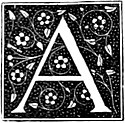323

 T the beginning of last year an account was published in one of the sporting papers of a football match on bicycles which took place near Wolverhampton. The attempt to revolutionise our great winter game completely failed owing to its many inherent impossibilities, but it was interesting as showing a tendency of certain orders of mind. There has always been a large number of so-called sportsmen who are never content with recognised forms of sport. They are perpetually on the look-out for some bizarre contest. As a general rule, the more ridiculous the conditions under which such contests take place, the better they are pleased. Anyone who cares to take the trouble to look through the files of Bell’s Life can find ample evidence of this for himself.
T the beginning of last year an account was published in one of the sporting papers of a football match on bicycles which took place near Wolverhampton. The attempt to revolutionise our great winter game completely failed owing to its many inherent impossibilities, but it was interesting as showing a tendency of certain orders of mind. There has always been a large number of so-called sportsmen who are never content with recognised forms of sport. They are perpetually on the look-out for some bizarre contest. As a general rule, the more ridiculous the conditions under which such contests take place, the better they are pleased. Anyone who cares to take the trouble to look through the files of Bell’s Life can find ample evidence of this for himself.
“Old Q”—the famous Duke of Queensberry—had an extraordinarily fertile imagination for weird and novel contests. Passing a wheelwright’s shop one day, he noticed one of the workmen trundling a big wheel into the yard. The man was running at a good pace, and it immediately occurred to “Old Q” that here was an opportunity for, in the words of the modern penny weekly, an absolutely novel competition. After some conversation with the wheelwright he learned that a man could probably run faster with a wheel than without one, the wheel no doubt acting as a sort of pacemaker. Having obtained this valuable piece of information, the duke 
LAWN TENNIS: MOUNTED v. LIFEGUARDSMAN IN FULL UNIFORM.
promptly arranged a match between the wheelwright and a certain fleet-footed barber of Oxford Street, and offered a very substantial prize to the winner. The conditions were that the wheelwright should trundle one of the back wheels of the duke’s carriage, while the barber, of course, should run unencumbered. Just before the match came off the duke made the unpleasant discovery that his nominee could only show his best turn of speed with a wheel a foot higher than that of the duke’s carriage. But “Old Q” wasn’t to be baffled by an obstacle of this kind. He had a sort of platform or daïs a foot high erected along the course where the race was to be run. By trundling the

